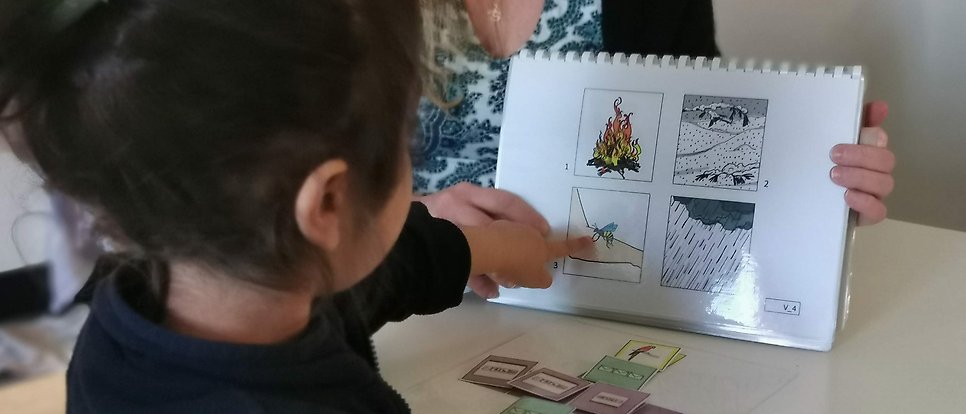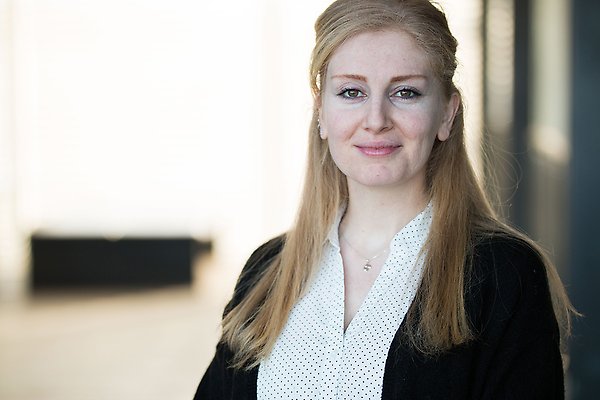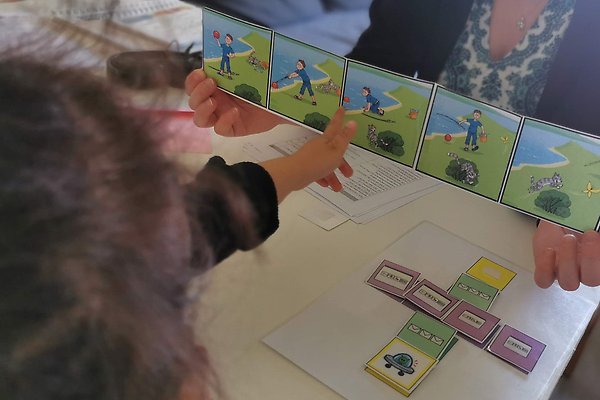Active use of native language strengthens bilingualism

One hundred Swedish and Arabic-speaking children between the ages of 4 and 7 participated in the study. Photo: Nadim Chemaly
Speaking Arabic at home and reading books and stories to children in Arabic helps develop both that native language and Swedish. This is shown in a new thesis from Uppsala University. The study is based on one hundred bilingual children in Sweden who speak Swedish and Arabic and the same number of bilingual children in Lebanon.
“It’s important for parents to speak the native language at home with their children as this enhances the children’s vocabulary in the native language but does not negatively impact on the development of their Swedish vocabulary,” explains Rima Haddad, language researcher at Uppsala University.
Arabic is one of the most widely spoken minority languages in Sweden. One hundred Swedish and Arabic-speaking children between the ages of 4 and 7 participated in the study that forms the basis of Rima Haddad’s thesis. The children mainly spoke Syrian, Palestinian, Lebanese and Iraqi dialects, that is, the Arabic dialects most commonly found in Sweden, and they attended pre-school, pre-school classes or first-year classes in metropolitan regions in Central Sweden.

Rima Haddad, researcher in Linguistics at Uppsala University. Photo: Nadim Chemaly
The material and method were developed by Uppsala University researchers who are part of the European research network COST Action IS0804, and of a major research bilingualism project, BiLI-TAS, at Uppsala University.
Cross-referenced with Lebanese children
The Swedish and Arabic-speaking children were also cross-referenced with a multilingual group of one hundred children of the same age in Lebanon. Swedish was not one of the languages spoken by the children in Lebanon; instead they spoke either Arabic and French or Arabic and English. The Swedish children were tested in both Arabic and Swedish using specially designed vocabulary tests and image-based and narrative tasks. The children’s parents responded to questionnaires and were interviewed about their children’s linguistic development and language use both at home and beyond.

The more the children were exposed to their native language and Swedish, the stronger their linguistic development proved to be. Photo: Nadim Chemaly
The study results for the Swedish and Arabic-speaking children in Sweden showed that those children’s vocabulary and narrative skills developed in both languages.
“A particularly interesting finding in our study was that development of the native language did not stagnate. This goes against the findings of several international studies looking at multilingual children. This means that many of the children in Sweden are on the way to developing active bilingualism, provided they continue to have the opportunity to hear and use both of their languages,” adds Haddad.
No negative effect on Swedish
The more the children were exposed to their native language and Swedish, the stronger their linguistic development proved to be. Reading to the children in their native language and parents speaking Arabic with them at home supported their vocabulary development in Arabic while avoiding any negative effect on their Swedish.
In contrast to the results of previous studies (e.g. Calvo and Bialystok, 2014; Leseman, 2000), this study was able to show that the parents’ level of education (the family’s socioeconomic status) did not impact on the children’s vocabulary. This applied equally to the children in Sweden and in Lebanon.
Elin Bäckström
Publication
Haddad, R. (2022). Child bilingualism in Sweden and Lebanon: A study of Arabic-speaking 4-to-7-year-olds. [Doctoral dissertation, Uppsala University]. Uppsala: Acta Universitatis Upsaliensis.
